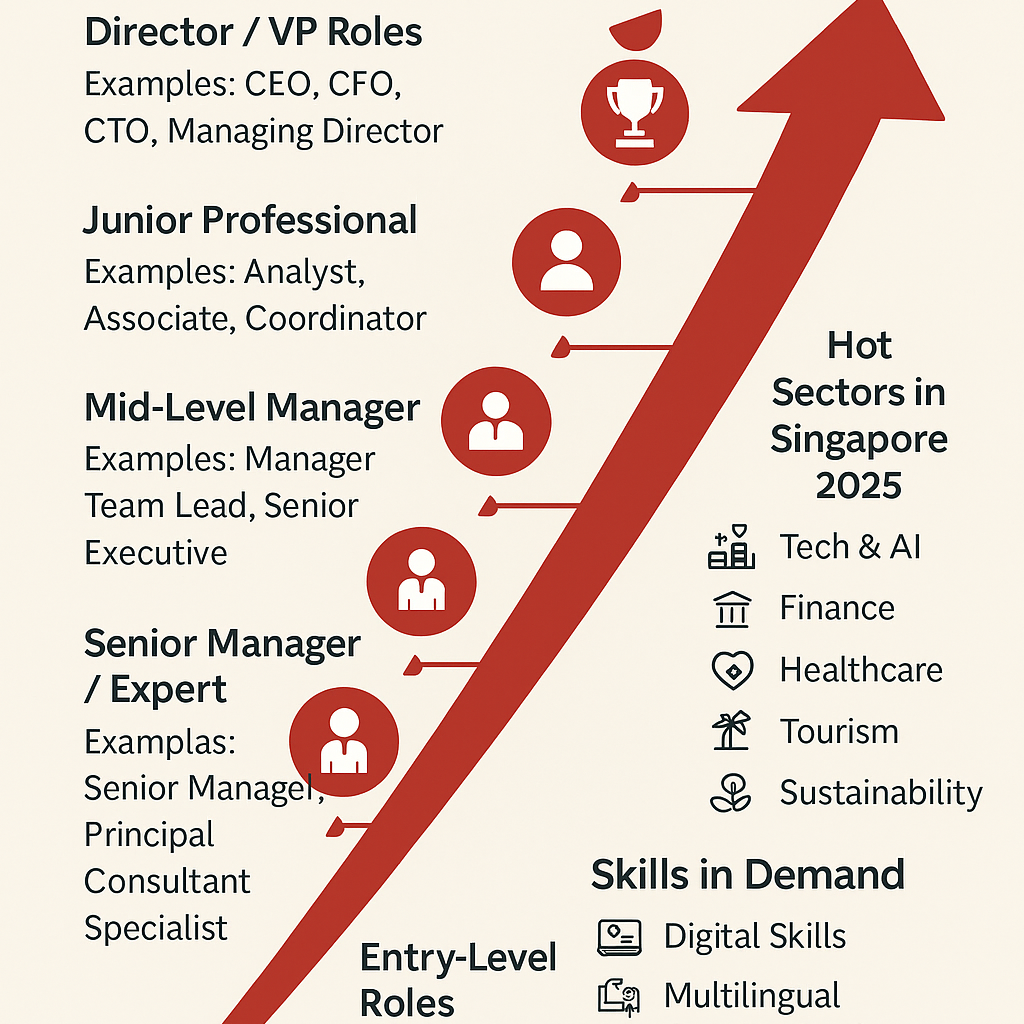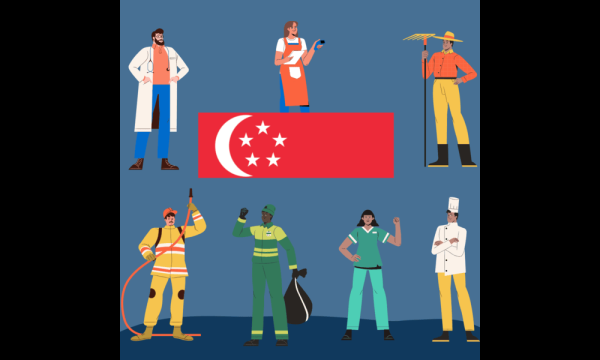Meta Title: Singapore Work Permit Changes 2025: Key Updates & What They Mean
Meta Description: Discover everything about Singapore Work Permit changes in 2025 — key updates, impacts, and tips for employers and workers.
Introduction: Big Shifts Are Coming for Singapore’s Workforce
Imagine landing your dream job in Singapore—only to find out that the rules have changed overnight. In 2025, significant updates to the Singapore Work Permit process are reshaping opportunities for foreign talent and redefining employer responsibilities.
If you’re an expat planning your next move, an HR leader strategizing talent acquisition, or simply curious about how Singapore is balancing its open economy with national interests, this guide will give you the inside story. Let’s dive into what these changes mean for you.
The Singapore Work Permit: A Quick Overview
Before we unpack the 2025 changes, it’s important to understand what the Singapore Work Permit system entails:
- Work Permit (WP): For semi-skilled foreign workers in sectors like construction, manufacturing, marine, and services.
- S Pass: For mid-skilled workers who meet a minimum salary threshold.
- Employment Pass (EP): For professionals, managers, and executives (PMEs) earning a higher minimum salary.
Each of these permits has its eligibility criteria, processing times, and quotas tied to the sector’s needs.
For a detailed current breakdown, visit the Ministry of Manpower (MOM) official site.
What’s Changing in 2025? (With Table Overview)
Singapore has announced sweeping changes in 2025 to align its workforce policies with global talent competition, economic transformation goals, and domestic employment priorities.
Here’s a snapshot:
| Aspect | Current (2024) | Changes (2025) |
|---|---|---|
| Minimum Salary (S Pass) | SGD 3,000 (general sectors) | SGD 3,300 (incremental adjustment) |
| Work Permit Sector Quotas | Varies by industry | Reduced across construction, services |
| Fair Consideration Framework | Mandatory for EP job advertisements | Expanded to include S Pass roles |
| Skills Assessment for WP | Industry-driven, non-standardized | Centralized national skills platform |
| Medical Insurance Requirements | Basic coverage required | Comprehensive medical coverage mandate |
Why the Changes? Understanding Singapore’s Strategic Shift
Singapore isn’t shutting its doors. It’s elevating the quality of its foreign workforce while protecting local jobs.
Three key drivers behind these changes:
1. Talent for the New Economy
As Singapore leans heavily into sectors like Green Energy, Fintech, Healthcare Tech, and AI-driven industries, it needs specialized, highly skilled workers — not just manpower volume.
🔗 Related: Learn about Singapore’s Industry Transformation Maps 2025.
2. Reducing Overdependence
Post-pandemic, Singapore realized the risks of an over-reliance on foreign workers, especially in construction and services. Tightening quotas nudges employers toward productivity improvements and automation.
3. Enhancing Fairness for Locals
The expanded Fair Consideration Framework (FCF) signals a clear message:
Employers must genuinely consider local candidates before hiring foreigners.
How These Changes Impact Different Groups
For Foreign Workers: New Hurdles, New Opportunities
- Higher S Pass salary requirements mean competition will intensify.
- Verified skills and certifications will matter more, especially for Work Permit holders.
- Medical coverage improvements will provide better security but could raise living costs slightly.
Personal Insight:
“When I applied for my S Pass in 2017, the salary requirement was significantly lower. Now, young professionals will need to prove both competency and command a premium salary.”
– Mark Tan, IT Consultant in Singapore
For Employers: Strategic Hiring Becomes Crucial
- Recruiters must rethink workforce planning, budgeting for higher salaries and compliance requirements.
- Building local talent pipelines becomes not just a “good to have” but a necessity.
- Leveraging alternative passes (like Tech.Pass for top tech talent) could be part of a smart strategy.
For Singapore Residents: A More Balanced Landscape
Local workers can expect:
- More job opportunities at mid-senior levels.
- Stronger protections against hiring bias.
- Upskilling pressures to meet global standards.
Key Insights: Navigating Singapore Work Permit Changes in 2025
Here are fresh perspectives and actionable strategies if you’re affected:
1. Focus on Specialized Skills
Generic degrees won’t cut it. Upskill in niche areas like:
- Data Analytics
- Cybersecurity
- Green Engineering
- Advanced Manufacturing Technologies
Courses from institutions like NUS Lifelong Learning or SkillsFuture Singapore can add weight to your profile.
2. Prepare for Skills Verification
Expect Singapore to standardize skills assessments across sectors. Preemptively gathering certified training, experience letters, and skills portfolios can put you ahead.
3. Understand New Healthcare Coverage Rules
Starting 2025, employers must offer comprehensive health insurance covering not just hospitalization but outpatient care and chronic diseases too.
If you’re a worker, factor these into your salary negotiations. If you’re an employer, anticipate a 3%-5% increase in overall employment costs.
4. Internal Mobility Matters
Instead of frequent cross-border job hopping, building a longer tenure within Singapore (with role evolution) will become a stronger work pass renewal point.

5. Employer Branding Will Be Key
Companies seen as “employers of choice” with strong local engagement practices will have a smoother time hiring foreigners.
Winning strategies include:
- Transparent promotion policies
- Inclusive work environments
- Competitive, fair compensation packages
Future Outlook: Singapore in 2030 and Beyond
The 2025 Work Permit changes are just a step toward a broader vision.
By 2030, expect:
- Even more automation in traditional industries
- Hybrid work policies becoming standard
- AI-driven labor matching platforms replacing manual job searches
- Regional talent competition intensifying (with Malaysia, Vietnam, Indonesia growing fast)
Singapore is positioning itself not as the cheapest place to work—but as one of the most innovative, future-ready economies globally.
Conclusion: Get Ready, Stay Ready
The Singapore Work Permit changes in 2025 reflect a new reality:
Talent must meet higher standards, and businesses must think smarter about workforce planning.
Whether you’re a foreign worker aiming for your dream job or an employer seeking global talent, staying informed and adaptive is the best way forward.
Singapore remains open—but only to those ready to grow with it.
Call-to-Action:
👋 What’s your take on the Singapore Work Permit changes?
Are you planning to move to Singapore, or are you adjusting your hiring strategies?
👉 Drop your thoughts in the comments below


0 Comment